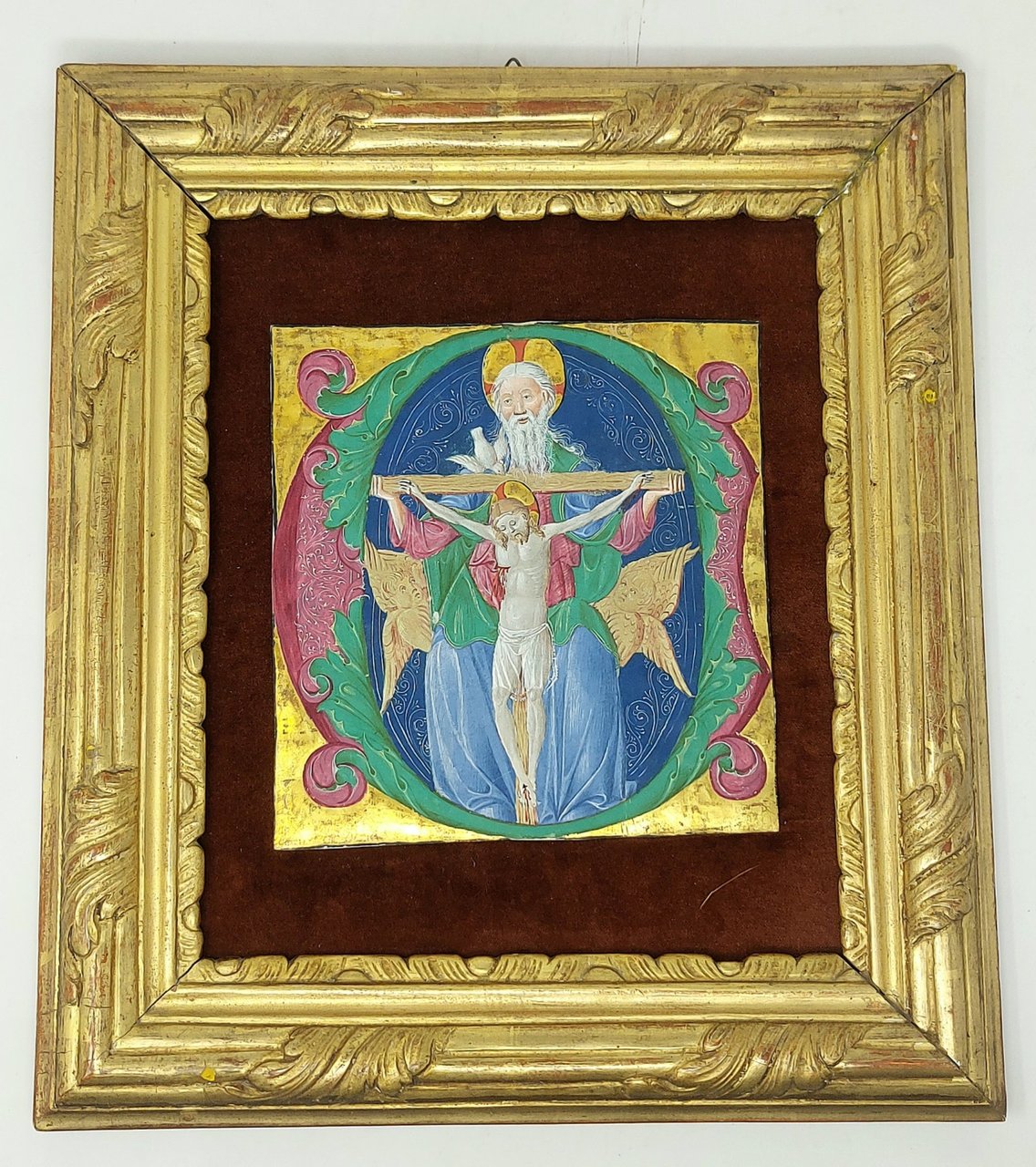

Livres anciens et modernes
SPANISH FORGER
Dio Padre sostiene Cristo in croce (Miniatura su pergamena)
Parigi, ca. 1900,, ca. s.d. [1900]
6800,00 €
Pregliasco Libreria Antiquaria
(Torino, Italie)
Les frais d'expédition corrects sont calculés une fois que l'adresse de livraison a été indiquée lors de la création de la commande. Un ou plusieurs modes de livraison sont disponibles à la discrétion du vendeur : standard, express, economy, in store pick-up.
Conditions d'expédition de la Librairie:
Pour les articles dont le prix est supérieur à 300 euros, il est possible de demander un plan de paiement échelonné à Maremagnum. Le paiement peut être effectué avec Carta del Docente, Carta della cultura giovani e del merito, Public Administration.
Les délais de livraison sont estimés en fonction du temps d'expédition de la librairie et de la livraison par le transporteur. En cas de retenue douanière, des retards de livraison peuvent survenir. Les frais de douane éventuels sont à la charge du destinataire.
Pour plus d'informationsMode de Paiement
- PayPal
- Carte bancaire
- Virement bancaire
-
-
Découvrez comment utiliser
votre Carta del Docente -
Découvrez comment utiliser
votre Carta della cultura giovani e del merito
Détails
Description
//
On cutout of 16th-century antiphonary, measuring 181x170 mm, on verso seven lines of text. On blue background, within a large capital letter O in green and purple, with white friezes. God the Father holding the Crucified Son, the Dove of the Holy Spirit between them, on the sides two winged angels painted in liquid gold, the corners and haloes were made in burnished gold leaf. The painting is typical of the Spanish Forger, a painter and illuminator active in Paris from the end of the nineteenth century to the beginning of the twentieth century. He takes his misleading name, the Spanish Forger, from a false attribution of a painting once thought to be by a 15th-century Spanish artist. The name has stuck. Despite the growing evidence that the Forger supervised an atelier in Paris (remnants of old Parisian newspapers have been found inside the frames), no trace of his real identity has come to light. Unmasked in 1930 by Belle da Costa Green, then director of the Pierpont Morgan Library, where a retrospective exhibition was held in 1978. The miniature is painted on medieval parchment, a reused sheet from an Italian (or perhaps Spanish) choirbook dated c.1500, which demonstrates the Forger's methods. This scene, which depicts God the Father supporting the arms of the Cross on which Christ is crucified was a popular one in the Middle Ages. It is a splendid example of a "medieval forgery," however esteemed and sought after. Applied on purple velvet, in a beautiful mid-19th-century gilded frame. Voelckle, The Spanish Forger (1978).

